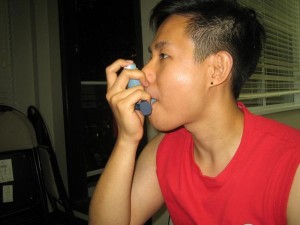Dyspnea commonly known as difficult or labored breathing, breathlessness, shortness of breath is a symptom common in many pulmonary and cardiac disorders particularly when there is decreased lung compliance or increased pulmonary resistance. The right ventricle of the heart is adversely affected by lung disorders primarily because it must double its efforts to pump blood through the lungs against greater resistance.
Dyspnea is also associated with neurologic or neuromuscular disorders which consequently affect respiratory function. Dyspnea can also occur immediately following strenuous exercise or intense physical activity even without any underlying medical condition. Furthermore, this condition is almost never a single primary disorder and is always secondary to an existing medical condition and those individuals with a wide variety of disorders.
Clinical significance of dyspnea
In general, acute diseases of the lungs and or any part of the respiratory system produce a more severe grade of dyspnea than most other chronic disease condition. Sudden dyspnea in a healthy individual may indicate pneumothorax (introduction of air into the pleural cavity), acute respiratory obstruction (ARDS). In immobilized patients, sudden dyspnea may denote pulmonary embolism (an emboli lodge within the alveoli network of the lungs). In such cases wherein difficulty of breathing progressively worsens or does not improve, the main objective is geared towards finding the main cause while providing relief measures to alleviate the discomfort in breathing.
Orthopnea: Special kind of Dyspnea
A special kind of dyspnea called orthopnea is the inability to breath easily in an upright position is found in patients with heart disease and occasionally with persons suffering from chronic obstructive pulmonary disease (COPD); dyspnea with an expiratory wheeze that occurs with COPD. Noisy breathing may result from narrowing of the airway or localized obstruction of a major bronchus by a foreign body or tumor growth that impedes the airway passage. The presence of both inspiratory and expiratory wheezing usually signifies asthma if the individual does not show any signs and symptoms of heart failure. Since dyspnea can occur with other disorders (cardiac disease, anaphylactic reactions, severe asthma), such disorders also need to be considered when obtaining an individual’s health history.
Pertinent issues that are essential in the assessment of dyspnea include:
- The individuals personal rating of the intensity of the breathlessness.
- The effort required to breath comfortably.
- The severity of the episodes of difficulty in breathing.
- The progression symptoms when engaging in physical activities.
- The sudden or gradual onset of labored breathing.
Relief measures for dyspnea

The management of episodes of dyspnea is aimed at identifying and correcting
its primary cause while at the same time providing for relief measures for the labored breathing. Relief of symptoms is sometimes achieved by allowing the patient to be positioned at rest with the head elevated (usually high fowlers position) and, in the most severe of cases allow for the administration of oxygen. Strategies that would enable patients with chronic or persistent episodes of dyspnea include frequent rest periods as well as providing for improve the quality of life for individuals whose labored breathing symptoms are chronic and permanent (those suffering from COPD).
